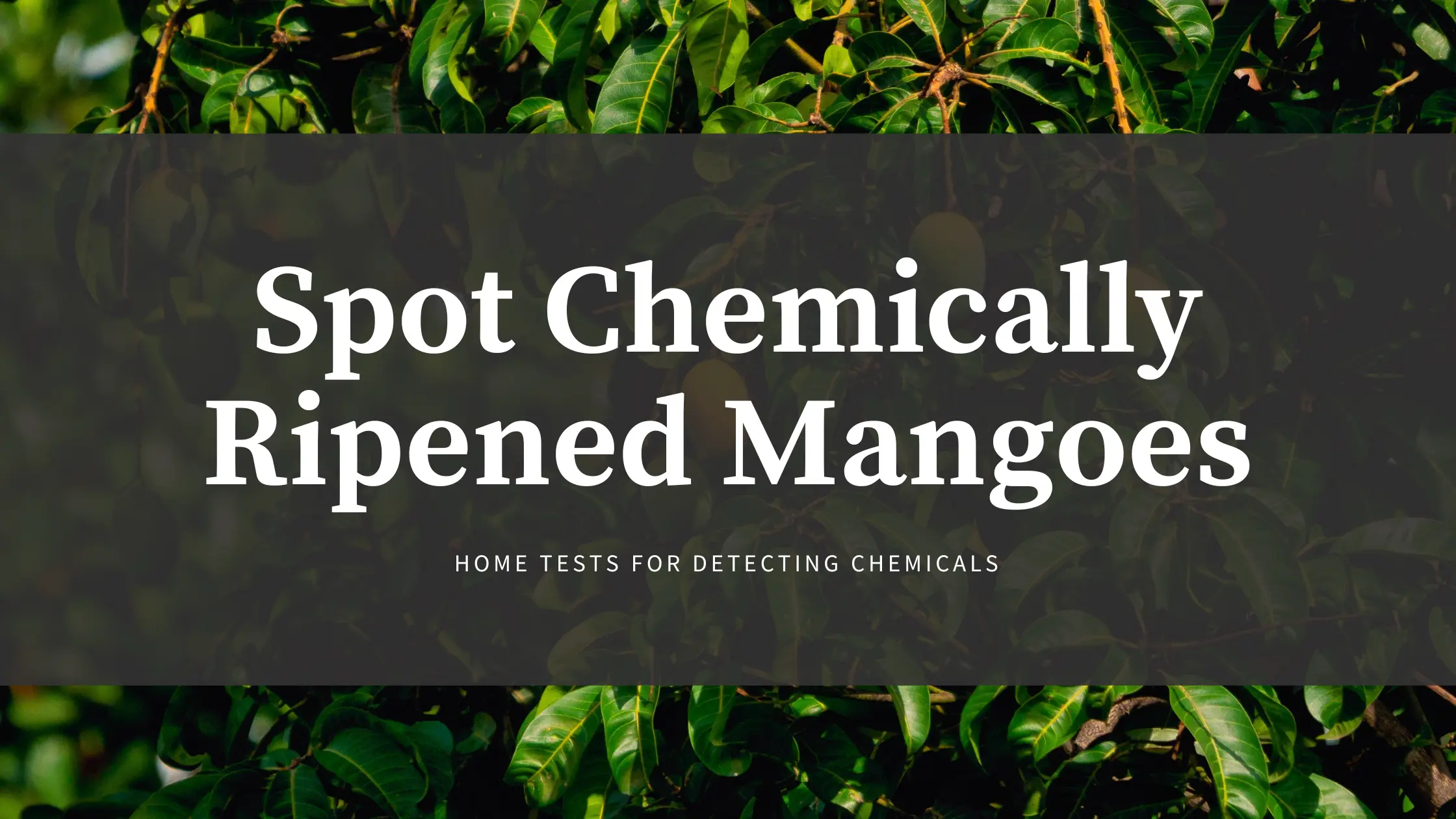
Mangoes, the crowned jewels of Indian summers, bring joy to our taste buds. However, the increasing concern about chemically ripened mangoes raises questions about the safety of our favorite fruit. In this guide, we will explore simple ways to identify if a mango has been ripened with chemicals, ensuring that you enjoy the natural sweetness and goodness of this tropical delight. Let’s dive into how to spot chemically ripened mangoes.
Understanding Chemical Ripening
What is Chemical Ripening?
Chemical ripening involves the use of synthetic substances like calcium carbide to quicken the ripening process. While this might accelerate the availability of mangoes in the market, it poses potential health risks due to the residue of harmful chemicals.
Signs of Chemically Ripened Mangoes
- Uniform Coloration:
Chemically ripened mangoes tend to have a uniform, unnatural color. Look for mangoes with variations in color, as natural ripening leads to uneven pigmentation.
- Unusual Odor:
Chemically ripened mangoes may emit an unusual odor, often described as a chemical or acetylene-like smell. A naturally ripened mango, on the other hand, has a distinct fruity aroma.
- Texture Check:
Gently press the mango near the stem. If it feels unnaturally soft or mushy, it might be chemically ripened. A naturally ripened mango should yield slightly to gentle pressure without being overly soft.
Home Tests to Spot Chemically Ripened Mangoes
Baking Soda Test:
Prepare a solution of water and baking soda. Immerse the mango in this solution for 15 minutes. If the fruit surface starts bubbling, it could indicate the presence of chemicals.Water Sink Test:
The water sink test relies on the principle that ripe mangoes are denser than unripe ones. A ripe mango will sink to the bottom of the bowl, indicating its readiness to be enjoyed. On the other hand, an unripe or chemically riped mango tends to float.The Smell Test:
Natural ripening imparts a sweet aroma to mangoes. Place the mango near your nose; a chemical odor may suggest the use of ripening agents.- Skin and Color Examination:
Inspect the skin closely. If it appears unusually shiny or has unnatural spots, the mango might have undergone chemical ripening. Trust your instincts and choose mangoes with a more natural appearance.
Buying Tips for Safe Mango Consumption
Source from Reputed Vendors:
Purchase mangoes from trusted local vendors or certified organic markets. Reputed sellers prioritize the well-being of consumers and are likely to provide naturally ripened fruits.Inquire About Ripening Methods:
Politely ask the vendor about the ripening methods used. Sellers who care about customer satisfaction will readily share information on the mangoes’ journey from orchard to market.Choose Seasonal Mangoes:
Opt for mangoes that are in season. Seasonal fruits are more likely to be naturally ripened as they follow the natural harvest cycles.
Conclusion
In the quest for the perfect mango, it’s essential to be vigilant and informed. By familiarizing yourself with the signs of chemical ripening and adopting simple home tests, you can safeguard your health and relish the authentic taste of naturally ripened mangoes. Make informed choices, support trustworthy vendors, and savor the true essence of this delectable summer fruit.
